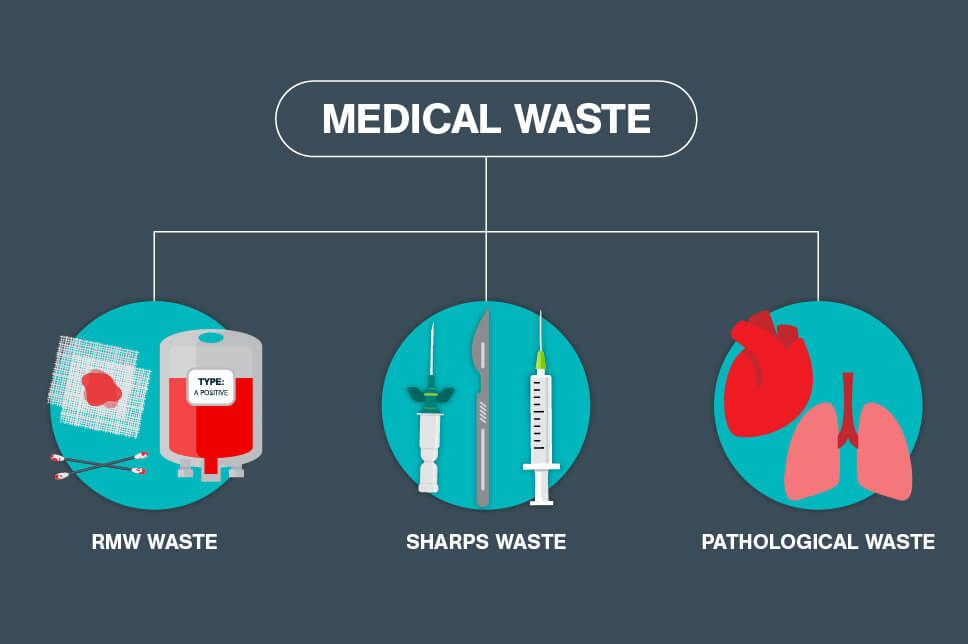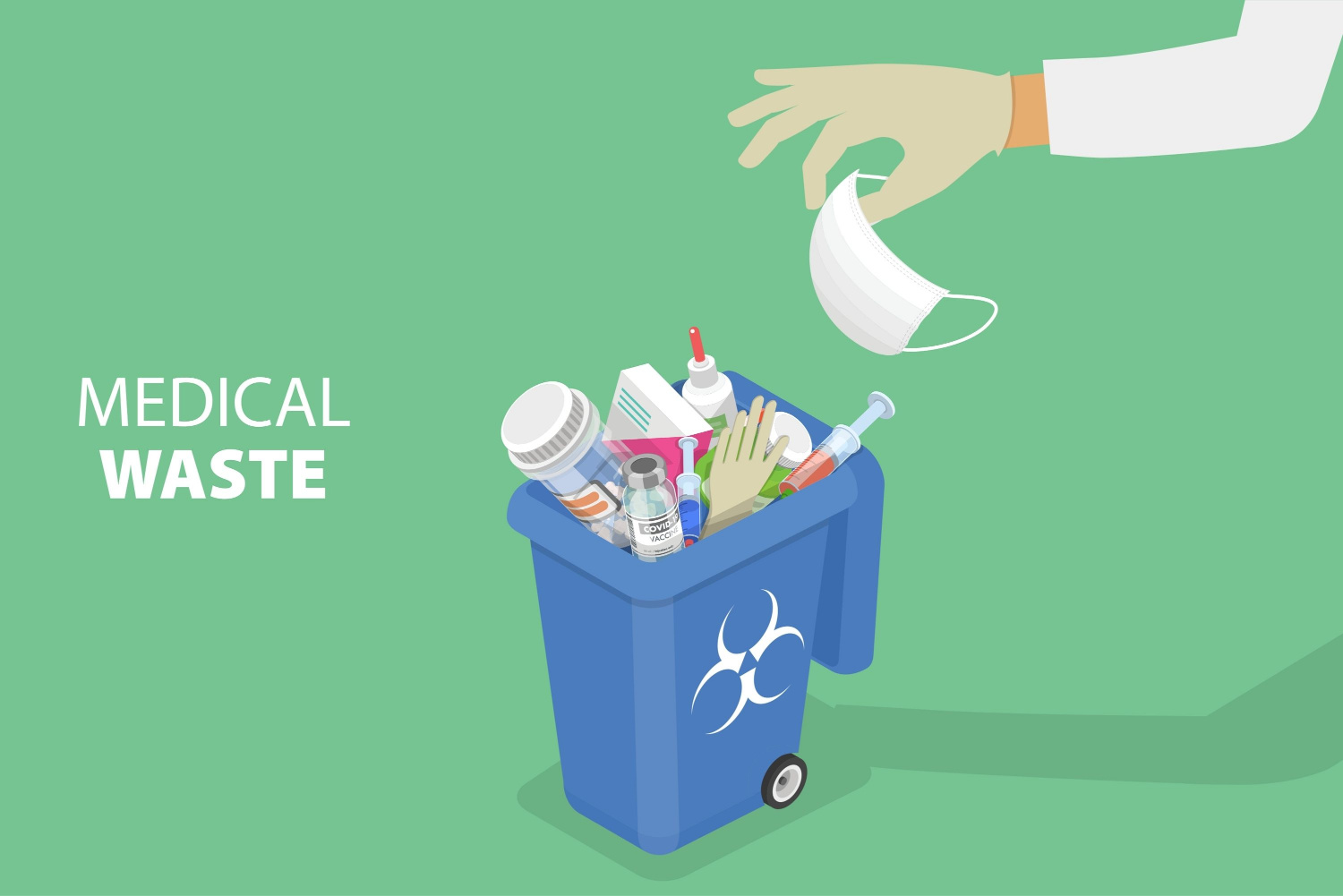Certified and Reliable Medical Waste Removal Service: Partnering for a Cleanser Future
Wiki Article
Best Practices for Medical Waste Monitoring
Medical waste monitoring is an important aspect of medical care facilities' procedures to make sure the safety of patients, team, and the environment. Executing finest techniques in clinical waste administration is essential to decrease the threats linked with hazardous waste.
Partition and Categorization
In the area of medical waste administration, appropriate partition and categorization are important techniques for ensuring the effective and risk-free disposal of healthcare-related products. Clinical waste is generated from different sources, consisting of medical facilities, centers, laboratories, and other health care centers. It contains a vast array of items, such as needles, syringes, plasters, handwear covers, and pharmaceutical waste.Partition entails the systematic splitting up of various types of medical waste based on their qualities and prospective risks. This procedure helps to stop cross-contamination and makes sure that each kind of waste is dealt with suitably. Sharps waste, such as blades and needles, need to be placed in puncture-resistant containers to protect against injuries and the spread of transmittable diseases. In a similar way, contagious waste, such as blood-soaked plasters or societies, ought to be segregated and treated individually to decrease the danger of spreading out microorganisms.
Categorization is the procedure of categorizing medical waste into various categories based upon its potential dangers. These groups might consist of infectious waste, contaminated materials, pharmaceutical waste, and basic waste. By categorizing waste, health care facilities can identify the suitable disposal techniques and ensure compliance with regional policies and guidelines.
Proper partition and categorization of clinical waste not only secure the health and wellness of healthcare employees and the basic public yet likewise add to the overall efficiency and effectiveness of waste monitoring. It lowers the risk of accidents, decreases ecological influences, and promotes responsible waste disposal methods.
Proper Storage and Identifying
To make sure the efficient and secure disposal of clinical waste, healthcare centers should follow appropriate storage and labeling techniques. WasteX Medical Waste Disposal. Proper storage and labeling play an essential role in preserving the integrity of clinical waste management systems and safeguarding the health and safety of health care employees, clients, and the publicWhen it involves storage, it is vital to have marked areas specifically made for different kinds of clinical waste. These locations should be secure, well-ventilated, and equipped with suitable containers that satisfy regulatory standards (medical waste removal). Segregation and classification of waste should also be taken right into consideration to avoid cross-contamination and prospective risks

Normal monitoring and inspection of storage areas and containers are necessary to determine any type of problems or offenses. Personnel should be trained on appropriate storage and labeling techniques, highlighting the significance of conformity with protocols and laws.
Safe Transport and Handling
Making certain the correct and secure transportation and handling of medical waste is crucial for keeping the integrity of waste administration systems and safeguarding the health and wellness of all involved. Clinical waste, that includes products contaminated with transmittable materials, pharmaceuticals, and other hazardous materials, need to be moved in a manner that avoids leakages, spills, and prospective contamination.To accomplish safe transportation and handling, a number of finest practices should be followed. It is vital to make use of watertight and puncture-resistant containers that are especially made for clinical waste. These containers ought to be properly sealed and labeled to stop any kind of unintentional exposure or messing up. In addition, waste should be set apart based on its nature and type to stop cross-contamination.
Throughout transport, it is crucial to make certain that waste containers are securely fastened and saved in a steady way. Autos made use of for delivering clinical waste ought to be equipped with appropriate safety and security features, such as spill control systems, to reduce the threat of any leakages or spills. Chauffeurs must receive training on proper handling and emergency reaction treatments to successfully attend to any kind of unpredicted incidents.
Moreover, the transportation and handling of medical waste need to follow all pertinent guidelines and guidelines established forth by regional, state, and government authorities. WasteX Medical Waste Disposal. medical waste removal service. Routine examinations and audits should be carried out to evaluate conformity and identify any kind of areas for enhancement
Conformity With Regulatory Standards
Keeping compliance with regulatory guidelines is necessary for effective clinical waste administration. These guidelines are implemented to protect public health and the atmosphere by making sure that medical waste is properly managed, dealt with, and disposed of. Compliance with regulative standards aids to stop the spread of transmittable illness, minimize prospective dangers, and reduce the overall impact of clinical waste on the environment.To attain conformity, medical care facilities need to remain informed regarding the particular policies governing medical waste administration in their jurisdiction. These laws might differ from country to nation, and even within various states or regions. It is important for health care facilities to have a comprehensive understanding of these guidelines and to carry out proper strategies and protocols to ensure compliance.
One secret aspect of conformity is the appropriate partition and labeling of various sorts of medical waste. This consists of dividing sharps from other waste, as well as categorizing waste based upon its prospective threats. Healthcare facilities should likewise guarantee that clinical waste is saved in suitable containers and that these containers are properly labeled and sealed.
Moreover, compliance with regulatory guidelines requires healthcare centers to develop correct training and education programs for team members involved in clinical waste management. This consists of supplying training on waste partition, taking look these up care of, and disposal procedures, as well as the correct usage of individual safety equipment.
Routine monitoring and audits are additionally necessary to make certain recurring compliance with regulatory guidelines. This involves conducting normal assessments of waste storage space areas, documenting waste monitoring procedures, and keeping documents of waste disposal.
Reliable Disposal Methods
Health care facilities need to use efficient disposal approaches for proper monitoring of medical waste. Incorrect disposal of medical waste can pose significant health and wellness and ecological dangers. There are numerous techniques that can be used to efficiently take care of medical waste, guaranteeing the security of healthcare workers, people, and the general public.One commonly made use of technique is incineration. Incinerators can safely shed clinical waste at heats, decreasing the quantity and ruining any kind of potentially unsafe microorganisms. Incineration can be costly and might release harmful contaminants into the air if not correctly controlled.
Another method is autoclaving, which entails subjecting the waste to high-pressure heavy steam. This procedure kills bacteria, infections, and other microorganisms, providing the waste safe for disposal in routine waste streams. Autoclaving is a environmentally pleasant and effective technique, yet it requires customized tools and skilled personnel.
Chemical sanitation is likewise used in many cases, where fluid chemicals are applied to the waste to disinfect it. This method is much less commonly utilized due to concerns concerning the efficiency of chemical sanitation and the capacity for chemical residues to infect the setting.
Along with these approaches, healthcare facilities should likewise apply correct partition, product packaging, and labeling of clinical waste to guarantee its risk-free handling and disposal. Regular training and education and learning of team on proper waste monitoring practices are critical to maintaining efficient disposal approaches.
Final Thought
To conclude, implementing best techniques for clinical waste management is necessary for making sure the safety of healthcare employees, people, and the environment. By effectively classifying and setting apart waste, saving and classifying it correctly, guaranteeing safe transportation and handling, abiding by regulatory guidelines, and using effective disposal approaches, health care facilities can properly take care of and minimize the dangers related to clinical waste. It is vital for healthcare companies to focus on and stick to these best practices to maintain a risk-free and sustainable medical care atmosphere.Clinical waste monitoring is a critical aspect of health care centers' operations to make certain the safety of clients, personnel, and the setting. Applying finest methods in clinical waste administration is important to reduce the dangers connected with harmful waste. These categories may include transmittable waste, harmful waste, pharmaceutical waste, and general waste.In final thought, executing best methods for medical waste monitoring is vital for making certain the safety and security of healthcare employees, patients, and the setting. By properly setting apart and classifying waste, storing and labeling it properly, ensuring secure transportation and handling, abiding with regulatory standards, and utilizing reliable disposal approaches, health care centers can properly manage and decrease the risks connected with clinical waste.
Report this wiki page